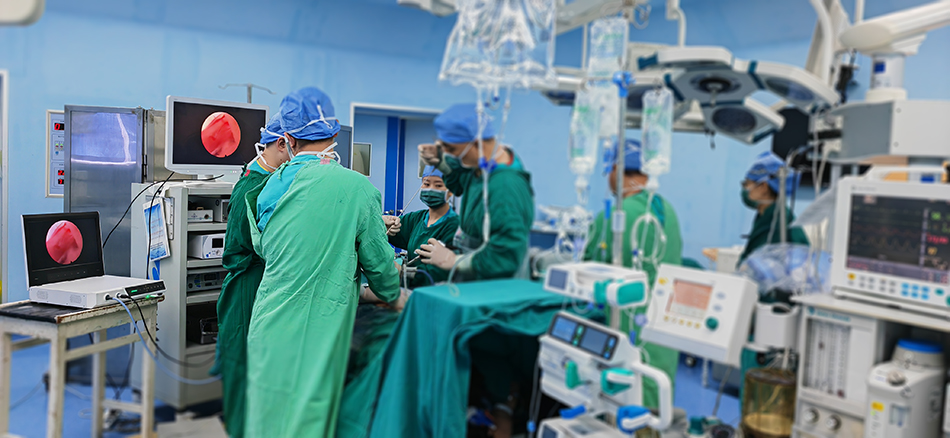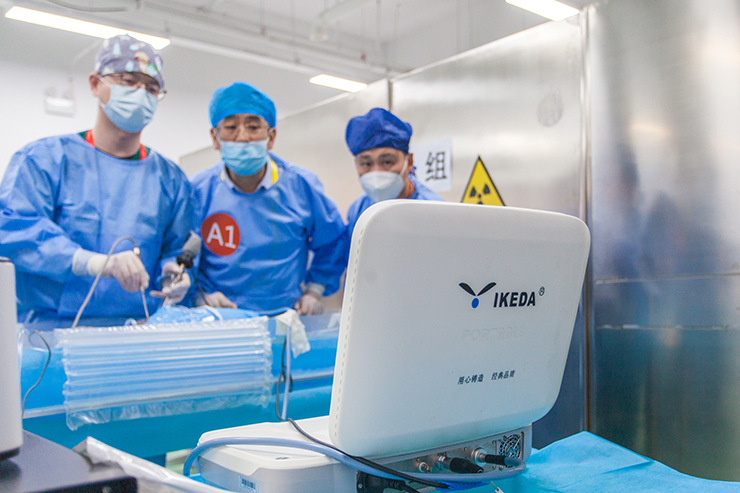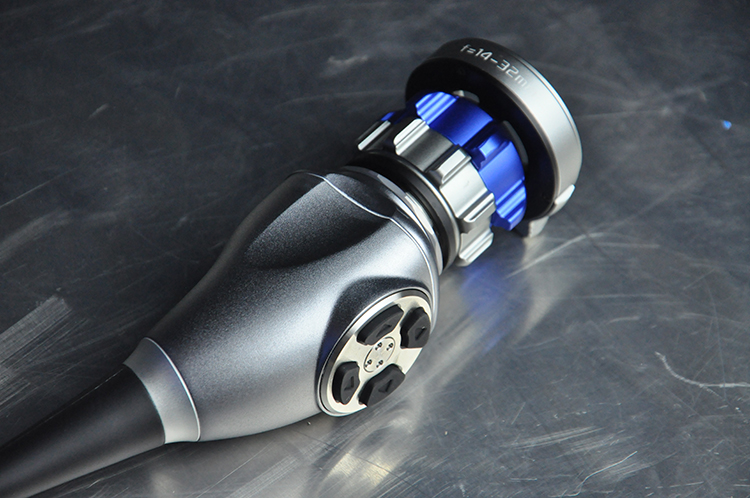
PELD: A Minimally Invasive Marvel
PELD, also known as transforaminal endoscopic surgery, is a minimally invasive procedure designed to treat lumbar disc herniations. This technique involves the use of a thin endoscope, which is inserted through a small incision in the skin and navigated to the affected lumbar disc. Once in position, the surgeon can visualize the pathology and perform the necessary interventions, such as discectomy, under direct visualization.
Advantages of PELD:
Minimal Tissue Disruption: PELD minimizes disruption to the surrounding tissues, preserving muscle and bone structures. This leads to reduced postoperative pain and quicker recovery times.
Lower Infection Risk: With smaller incisions, the risk of surgical site infections is minimized, making PELD a safer option for patients.
Shorter Hospital Stays: Most PELD procedures are performed on an outpatient basis, allowing patients to return home the same day.
Rapid Recovery: Patients can typically return to their daily activities more quickly compared to traditional open surgery.

UBE: The Emerging Competitor
UBE is a relatively new approach in the field of spine surgery that builds upon the principles of PELD but adds the element of unilateral biportal endoscopy. In UBE, two small incisions are made, with one serving as the portal for the endoscope and the other for instrumentation. This dual-portal system offers unique advantages over PELD.
Advantages of UBE:
Enhanced Depth Perception: The use of two portals provides enhanced depth perception, which can be particularly useful in complex spine surgeries, such as foraminoplasty.
Improved Instrumentation: UBE allows for the use of a wider range of instruments, making it a versatile choice for various spinal pathologies.
Reduced Radiation Exposure: The improved visualization in UBE may reduce the need for fluoroscopy during surgery, leading to lower radiation exposure for both patients and surgeons.
Comparative Analysis
Now, let's compare these two minimally invasive techniques in the context of spine surgery while considering the solutions offered by IKEDA Spine Endoscope Solutions.
Visualization Technology:
Both PELD and UBE rely on advanced endoscopic systems for visualization. IKEDA Spine Endoscope Solutions offers high-quality endoscopes with superior optics, ensuring clear and detailed images during surgery. The choice between PELD and UBE may come down to the surgeon's preference and the specific surgical requirements.
Surgical Precision:
UBE offers an advantage in terms of surgical precision due to its enhanced depth perception and instrumentation capabilities. However, with the right equipment and training, skilled surgeons can achieve high levels of precision with PELD as well.
Patient Outcomes:
Both PELD and UBE have demonstrated positive patient outcomes in terms of pain reduction, quicker recovery, and reduced hospital stays. The choice between the two techniques should consider the patient's specific condition and the surgeon's expertise.
Radiation Exposure:
UBE may have the edge in terms of reduced radiation exposure, thanks to its enhanced visualization. However, IKEDA Spine Endoscope Solutions offers radiation safety measures, such as low-dose imaging options, for PELD procedures, making them safer for patients and surgeons.
Learning Curve:
UBE is considered to have a steeper learning curve compared to PELD due to the need for advanced surgical skills and the management of two portals. Surgeons interested in adopting UBE may require additional training and practice.
Conclusion
In conclusion, PELD and UBE are both valuable minimally invasive techniques in the field of spine surgery, each with its own set of advantages. The choice between the two depends on the surgeon's expertise, patient-specific factors, and the complexity of the surgical procedure. IKEDA Spine Endoscope Solutions plays a crucial role in both techniques, providing cutting-edge endoscopic equipment and solutions that enhance the safety and effectiveness of spine surgeries.
The field of spine surgery is continually evolving, and these minimally invasive techniques, along with the support of advanced endoscopic systems, have greatly improved patient outcomes and surgical experiences. Whether a surgeon opts for PELD or UBE, the goal remains the same: to provide the best possible care and outcomes for patients with spinal pathologies. The continuous innovation in endoscopic technology ensures that spine surgery will continue to advance, offering better solutions and improved patient care in the future.



